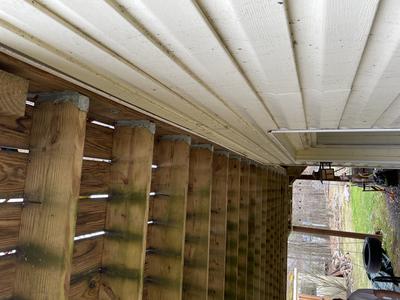Need to know load capabilities of my free standing deck.
by Dave
(Pittsburgh,PA)
My deck is supported by 2 sets of posts (6x6) and beams (2-2x10's). Posts are 7' apart with beam and beams are 9' apart. Can anyone help me calculate the load rating?
Overall deck is 10' out and 12' wide, 18" on center overhang all the way around.
Comments for Need to know load capabilities of my free standing deck.
|
||
|
||
|
||



























